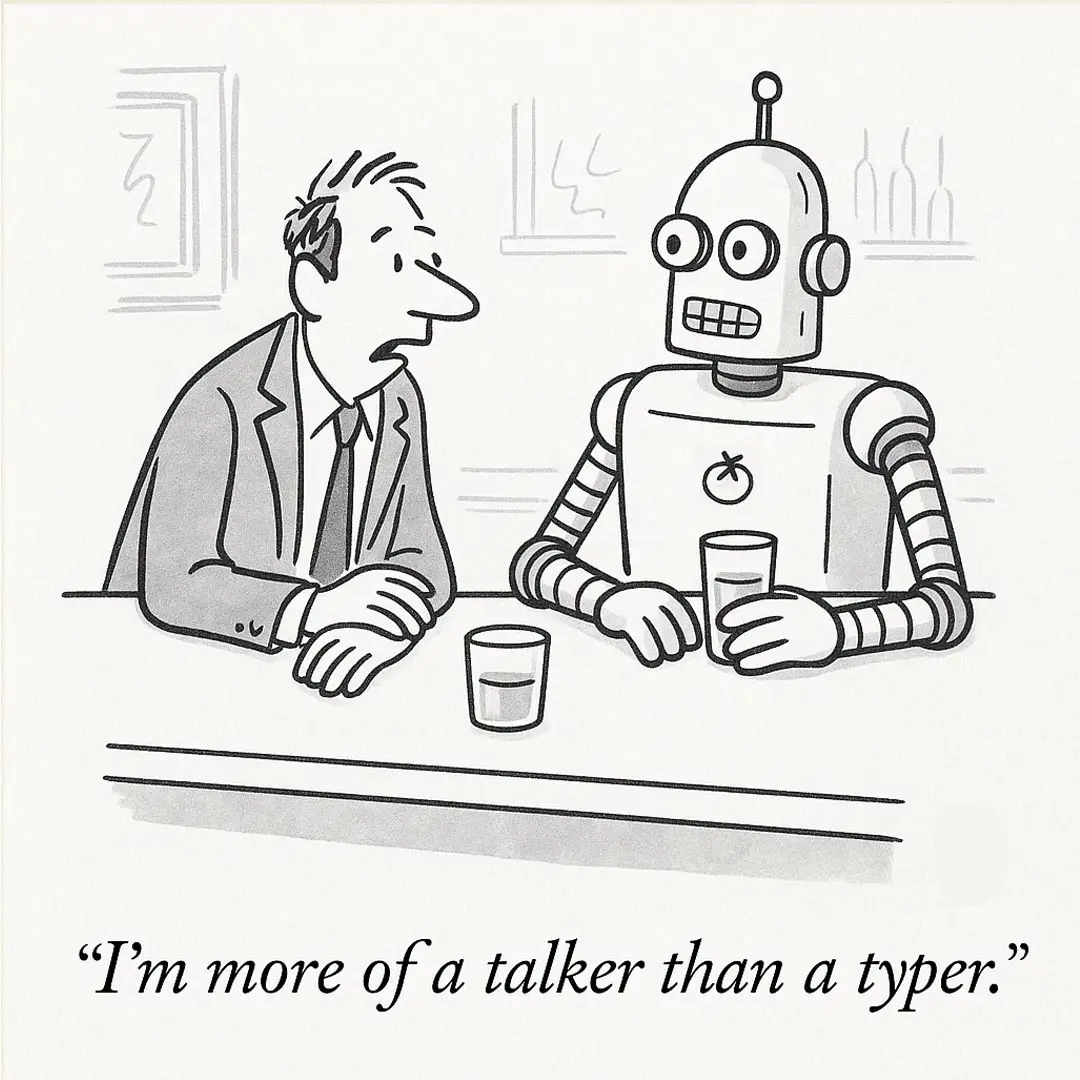Search just left the keyboard.
Not quietly. Not gradually. It sprinted out of the browser tab and into your camera, your mic, and your context.
Google’s AI updates are training a new behavior: instead of typing “dog-friendly beach,” you just say out loud, “Where can I take my three-year-old and golden retriever for a chill beach day with parking?” Then it answers. Not with links. With answers.
This isn’t a UI change. It’s a mental model shift.
And if your business still relies on people typing keywords into a box, you’re missing the bigger story.
We’ve Entered the Intent Layer
Search isn’t just reactive anymore. It’s proactive. It’s multimodal. And it’s finally behaving like the user: messy, emotional, mid-scroll, mid-life.
The new front doors to discovery aren’t 10 blue links. They’re:
- Screenshots — “What is this?” becomes a search
- Cameras — “Where can I get this rug?” becomes a query
- Voice — “My mom needs help with stairs but doesn’t want a ‘facility’…” becomes an answer
And here’s the kicker: people are using them.
Google’s seeing a 65% year-over-year spike in visual search.
1.5 billion people now use AI Overviews.
Younger users, especially, fluidly shift between voice, text, camera, and follow-up.
If Your Product/Service Can’t Be Found Visually, It Won’t Be Found at All
This is where most brands still fall flat. They’re building for keyboard search, not real-world triggers.
Let’s make this painfully real for two groups you may serve:
For Real Estate Brands, Agents, or Platforms:
If your listing only works for keyword search, you’ve already lost the next buyer.
What would a first-time buyer say out loud if they were nervous about a neighborhood?
What photo would a downsizer snap when walking past your open house sign?
What would a busy couple circle on their screen to figure out school ratings, walkability, or price trends?
If your listing, service, or site can’t be discovered through voice, camera, or screenshot – you’re not just missing clicks. You’re missing moments that convert.
For Senior Living Providers:
No one types “assisted living” when they’re overwhelmed. They talk.
What would a daughter say to her phone in the car after a hard conversation with Mom?
What brochure would she circle, screenshot, or scan when she doesn’t know where to start?
What kind of bedroom, meal, or care staff photo would trigger her to ask, “Is this place any good?”
If your community, care model, or service can’t show up from those real-life touchpoints, you’re not just missing traffic – you’re missing trust.
Google Just Turned Every Sidewalk Into a Search Bar
Let’s spell it out. The newest updates let users:
- Pin AI mode, camera, and voice directly to their home screen
- Shift from static keywords to conversational follow-ups
- Trigger shopping results, deep comparisons, and reviews from a photo
Which Means For Real Estate:
Buyers can now point their phone at a home and trigger AI-powered search.
Listings show up in image-based shopping grids, not just MLS links.
Someone can voice a hyper-specific query: “Homes near coffee shops with big backyards under $700K,” and get real, tailored results.
If your brand isn’t part of that interaction, you’ve left the front door wide open for someone else.
Which Means For Senior Living:
Visual search lets families snap a brochure or floor plan and ask nuanced questions. Voice lets them explain complex needs—and expect a simple, empathetic answer.
AI mode means they can follow up, not just click once and bounce.
If you only show up for “top 10 assisted living near me,” you’re already behind. Show up for the real questions. The long ones. The tired ones. The emotional ones.
They’re not searching less. They’re searching differently.
You don’t need better SEO. You need better instincts.
The best businesses won’t just answer queries. They’ll predict them.
They’ll stop guessing and start listening to the moments people actually reach for help.
That’s how AI search works now.
And that’s how trust gets built before anyone ever lands on your site.
The Next Click Starts With a Camera Snap or a Frustrated Voice
If you’re still designing your content or product as if users start at Google.com…
…you’re two steps behind the moment that actually matters.
We’ve seen this shift up close. Want to know where your brand fits into this new intent layer?
We’ve seen behind the curtain. Want a peek?
TLDR:
Google search isn’t keyword-first anymore, it’s context-first. If your brand isn’t showing up through voice, screenshots, or real-world visual triggers, you’re not in the conversation. Discovery is now multimodal, emotional, and moment-based. Build for that, or be left behind.
Related Posts
The Best Leads Aren’t Looking for You – They’re Looking for Help.
6 Real Estate Blogs You Can’t (and Shouldn’t) Write Without AI



